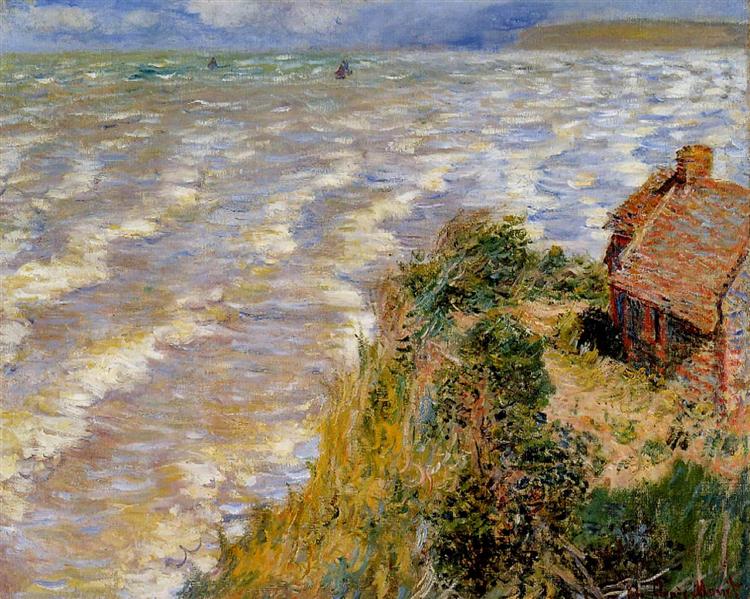Beschrijving
Claude Monet’s Rising Tide at Pourville, painted in 1882, is a fascinating example of Monet’s mastery of the subtleties of colour, light and atmosphere in his landscapes. One of a series Monet made during his visits to the Normandy coast, this painting captures the essence of the seascape and the fluidity of the moment, a recurring theme in his work. The choice of Pourville, a small seaside town in Normandy, is no coincidence; Monet was deeply inspired by the natural beauty of the region, and his work here has left a profound mark on the history of Impressionist art.
In this piece, the focus is on the sea in a state of vibrant energy. The rising waves, combined with the changing sunlight, create a palpable sense of movement and transformation. Monet uses a color palette that ranges from deep blues and greens, punctuated with creamy whites, suggesting aquatic mist. This explosion of color, coupled with the loose and rapid manner in which the brushstrokes are applied, succeeds in conveying the dynamics of the sea in a rising tide, a symbol of the uncontrollable force of nature.
A particularly interesting aspect of “Rising Tide at Pourville” is the way Monet captures the light on the water. The reflective surfaces, where the sun caresses the waves, reveal not only the luminosity, but also the emotions that light can evoke. The short, dense brushstroke technique allows the colors to blend together, creating an almost vibrant effect that invites the viewer to immerse themselves in the scene.
In the foreground of the painting, tiny figures can be seen that appear to be bathers, representing human activity in contrast to the immense natural landscape. Although these figures are almost insignificant compared to the vast expanse of the sea, their presence adds a human dimension to the work; moments of leisure and enjoyment coexisting with the looming force of nature. This balance between the human and the natural is a recurring theme in Monet's work, who often sought harmony between the two.
The composition of the work is carefully balanced. Monet establishes a horizon line that is not rigid, but undulates under the pressure of the waves and the sky. This compositional choice gives depth to the work and allows the viewer to feel immersed in the scene, as if they could also experience the sea breeze and the salty fragrance. The mood of the painting is one of tranquility in the midst of action, a duality that Monet knew how to convey masterfully.
“Rising Tide at Pourville” is inscribed in an artistically significant context, as it is produced during one of Monet’s most productive phases, before his immortalization through the canvases of water lilies and gardens. This work, along with other works in the coastal series, reflects his commitment to the Impressionist style, where visual perception and the impression of a moment are more important than detailed representation. The painting is not only a visual record, but also a sensory study of how light and color are experienced in nature.
The attention to detail, the luminosity and the almost ephemeral quality of the work make “Rising Tide at Pourville” a jewel in Monet’s artistic corpus. It represents a captivating moment where the interaction of natural elements and humanity intertwine, thus creating a commentary on our relationship with the environment around us. When looking at this work, the viewer does not just contemplate a landscape, but is also invited to reflect on the essence of nature and its inexorability. This is Monet’s magic, immortalizing the transitory while offering a window to eternity through his brushstrokes.
KUADROS ©, a famous painting on your wall.
Hand-made oil painting reproductions, with the quality of professional artists and the distinctive seal of KUADROS ©.
Painting reproduction service with satisfaction guarantee. If you are not completely satisfied with the replica of your painting, we will refund 100% of your money.

